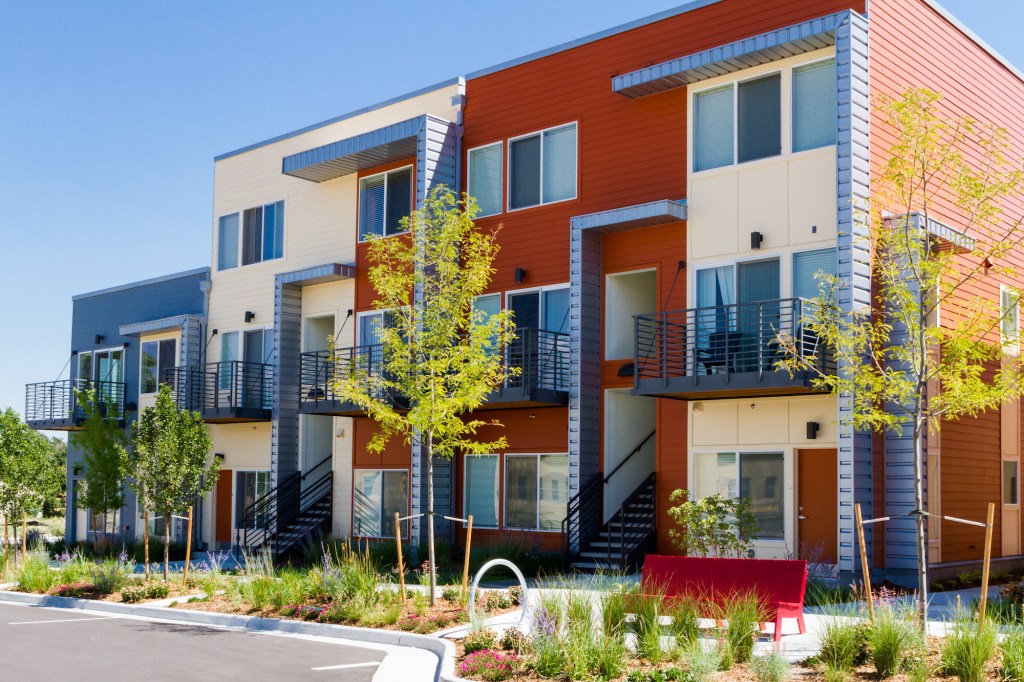The fourth quarter of 2020 showed just how resilient the multifamily market has been during the COVID-19 pandemic, according to Newmark’s recent multifamily capital markets report.
Despite a slow start in multifamily investment sales volume due to the pandemic, it picked up substantially during the second half of the year. While 2020 volume totaled $138.7 billion and was down 27.6% year over year, the fourth quarter saw the largest quarterly investment sales figure to date, surpassing the fourth quarter of 2019. Fourth-quarter volume totaled $56.7 billion, a 115.2% quarter-over-quarter increase. According to Newmark, “investor appetite for suburban product lifted the overall market,” with garden-style community deals accounting for 66.8% of all trades last year.
Investors were most active in December, with pent-up demand meeting greater for-sale opportunities. The $24.9 billion in sales volume topped the previous highest monthly total from December 2019 by 6.3%.
For sales volume, Dallas attracted the largest capital flow at $10.3 billion, while smaller markets, such as Indianapolis; Jacksonville, Florida; and Kansas City, Missouri, experienced the strongest full-year increases.
Multifamily has benefited from the disruption of other commercial real estate assets, such as hard-hit retail, hotel, and urban office. Investment allocation to the industry increased to an all-time high of 43.2% last year, 8.1% above the long-term average of 26.1%.
COVID-19 and its impact on density also has accelerated the trend for multifamily investors to deploy capital in non-major markets. Last year, these markets received 75.8% of investment—the highest share on record, according to Newmark. Over the past five years, the percentage of multifamily investment into non-major markets has risen 13.9%.
Other key findings in Newmark’s “4Q United States Multifamily Capital Markets Report,” include:
- Total returns accelerated in the second half of 2020, with those in the fourth quarter rising 162 basis points from the second quarter low of -0.6%. Newmark cited the National Council of Real Estate Investment Fiduciaries’ Appreciation Index, which showed income generation for multifamily properties staying strong with total returns positive last year.
- With favorable demographics and strong fundamentals, markets like Salt Lake City (12.7%), Phoenix (10.4%), and California’s Inland Empire (8.9%) saw the highest total returns. However, San Francisco (-3.1%), New York (-2.3%), and Chicago (-2.3%) were most impacted by out-migration and COVID-19 disruption, contributing to negative total returns.
- Multifamily cap rates were at an all-time low of 5.08% nationwide in the fourth quarter due to increased competition. According to Newmark, this is a 21-basis point decline year over year, while the spread between major and non-major markets increased to 54 basis points.
- Quarterly rent growth for multifamily fell to -0.6% in the fourth quarter, which was slightly higher than the same period in 2019 that experienced -0.8% quarterly rent growth. The lowest annual rate in a decade, annual rent growth dropped to 0.1%. Markets with the strong rent growth last year are those benefiting from migration trends, like Phoenix (4.5%); Sacramento, California (4%); and Las Vegas (2.2%).
- Demand for suburban multifamily product boomed last year. Phoenix, Philadelphia, and Kansas City saw the largest annual suburban rent growth of 5.5%, 3.2%, and 2.8%, respectively.
- Fannie Mae and Freddie Mac saw record lending volume in 2020, with government-sponsored enterprise debt accounting for nearly half of all multifamily debt outstanding at 48.4%, followed by banks and thrifts at 29%.
